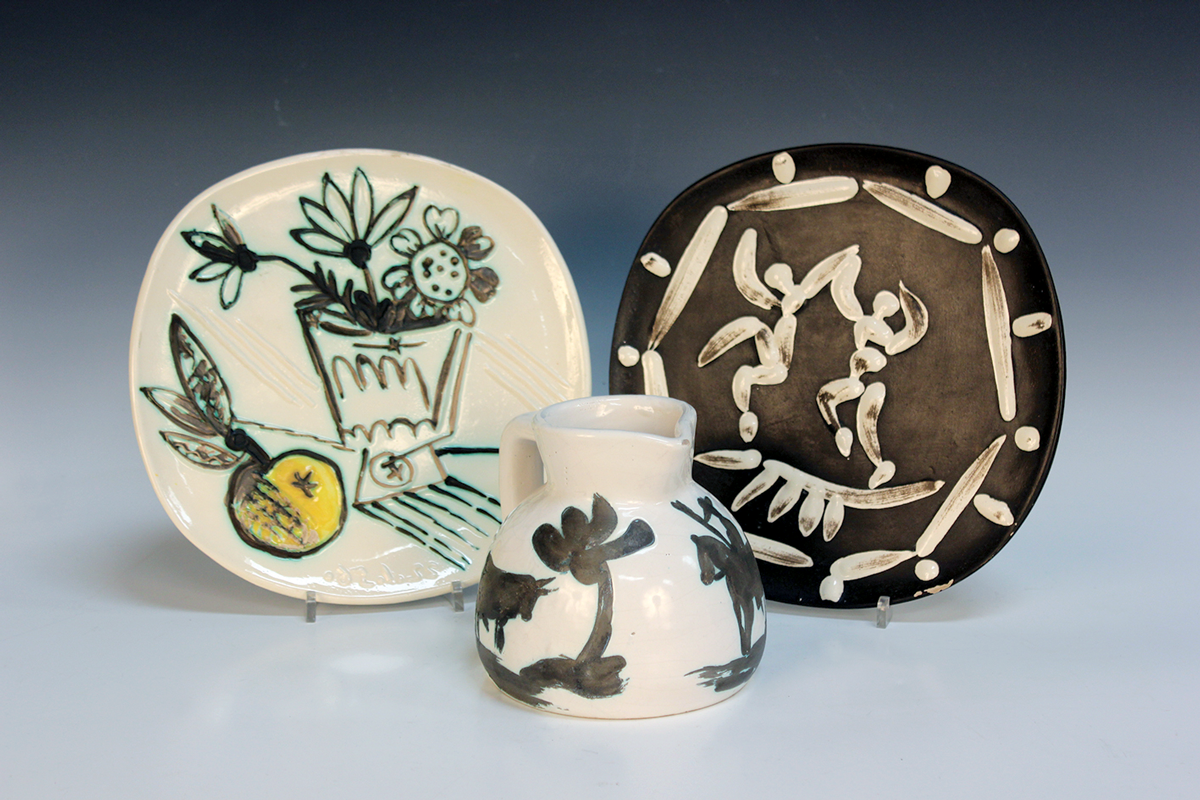
In the summer of 1946, Pablo Picasso decided to visit the annual potter’s exhibition in the provincial village of Vallauris whilst staying with his friend, the engraver Louis Fort. There he met Suzanne and Georges Ramié, the founders of the Madoura workshop, who were keen to persuade him to come to Vallauris.
Picasso returned in July 1947 bringing his extraordinary imagination and creative energy to ceramics. He was first attracted by the large, almost rectangular dishes in the workshop. Here Picasso took the everyday and transformed it in to high art, painting and incising with a richness of expression which still causes my heart to race. Favourite themes included figures, bullfights and still lifes as depicted on the jug and plates illustrated here. In each you see the free, graphic rhythm which typifies Picasso’s ceramics.
These pieces are Picasso Madoura editions. They were made in two ways. The first involved making an authentic replica of an original work by exactly repeating the size and decoration. The second method transferred an original subject by means of an engraved, hardened plaster mould, to a fresh ceramic sheet which would be applied in order to take a clay impression. These editions are authenticated by a stamp to the base. Their close connection with Picasso’s hand, like a handmade print, attracts the attention of an international group of collectors. Picasso’s relationship with Madoura and the Ramiés grew and between 1948 and 1955 Picasso lived at Vallauris before moving to Cannes.
Picasso resurrected the ancient tradition of the all-round artist exploring painting, sculpture, graphic art, engraving and ceramics.
Picasso delighted in the craft of the ceramicist and quickly began to talk with the Ramiés using the technical language of the potter. The Ramiés, for their part, indulged the often extremely unorthodox practices of the artist which included his methods of firing, glazes and form. Take as an example the plate ‘Bunch with Apple’, made in 1956, in an edition of 400, it was decorated with oxidized paraffin.

You approach the Musée National Picasso at Vallauris in Provence through a square filled with shops and restaurants. Amidst the life of the village stands the bronze L’homme au mouton given by the artist in 1949. Inside the museum there is a jewel like array of original ceramics made by Pablo Picasso which is guarded fiercely by the museum staff. The pieces capture the spirit of Provence in a way which speaks of a joy and freedom after the artist’s years under Nazi occupation in Paris. You sense the effect that the light and warmth of Provence had on Picasso which he expressed in his ceramics in the post-war years.